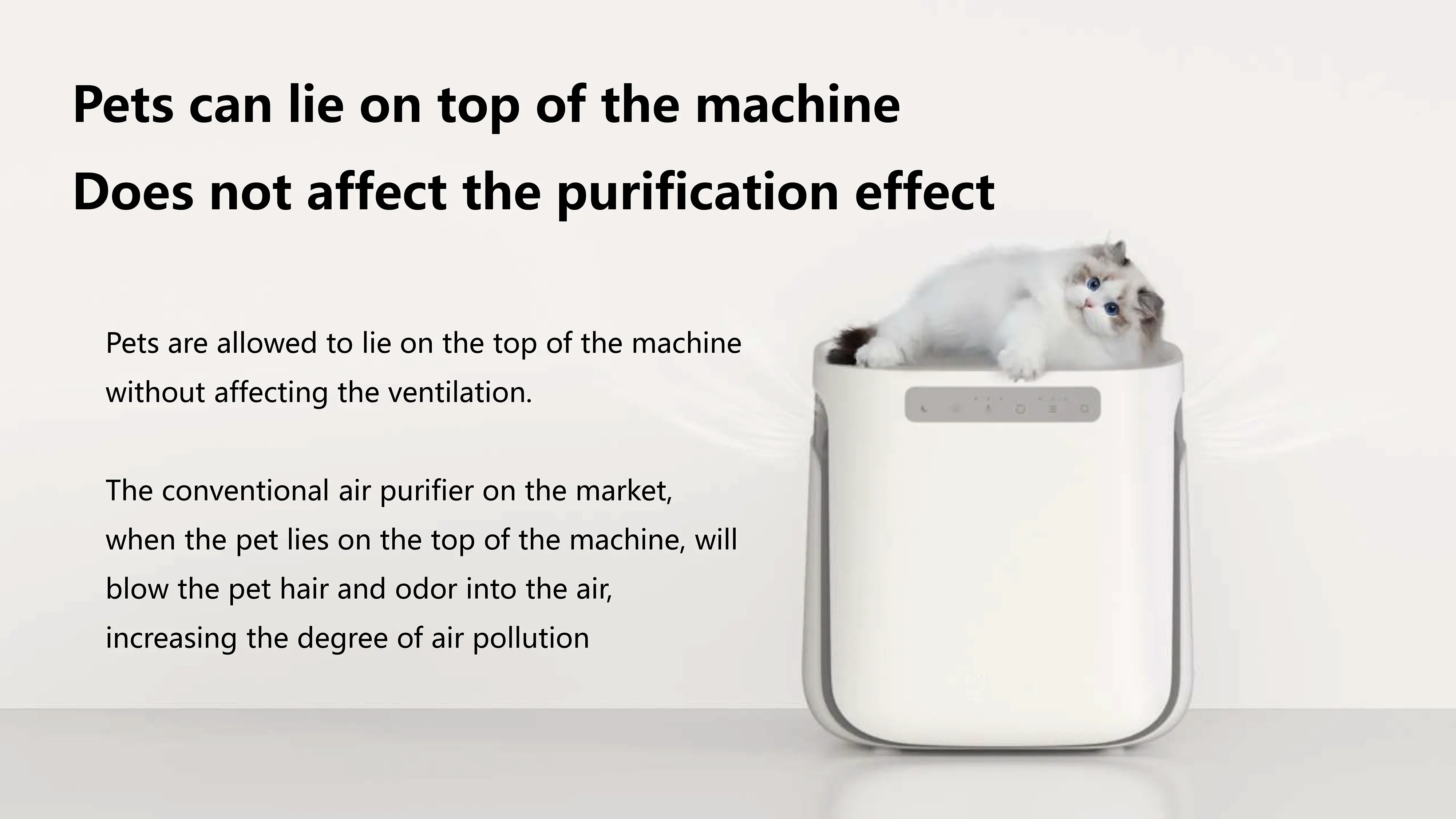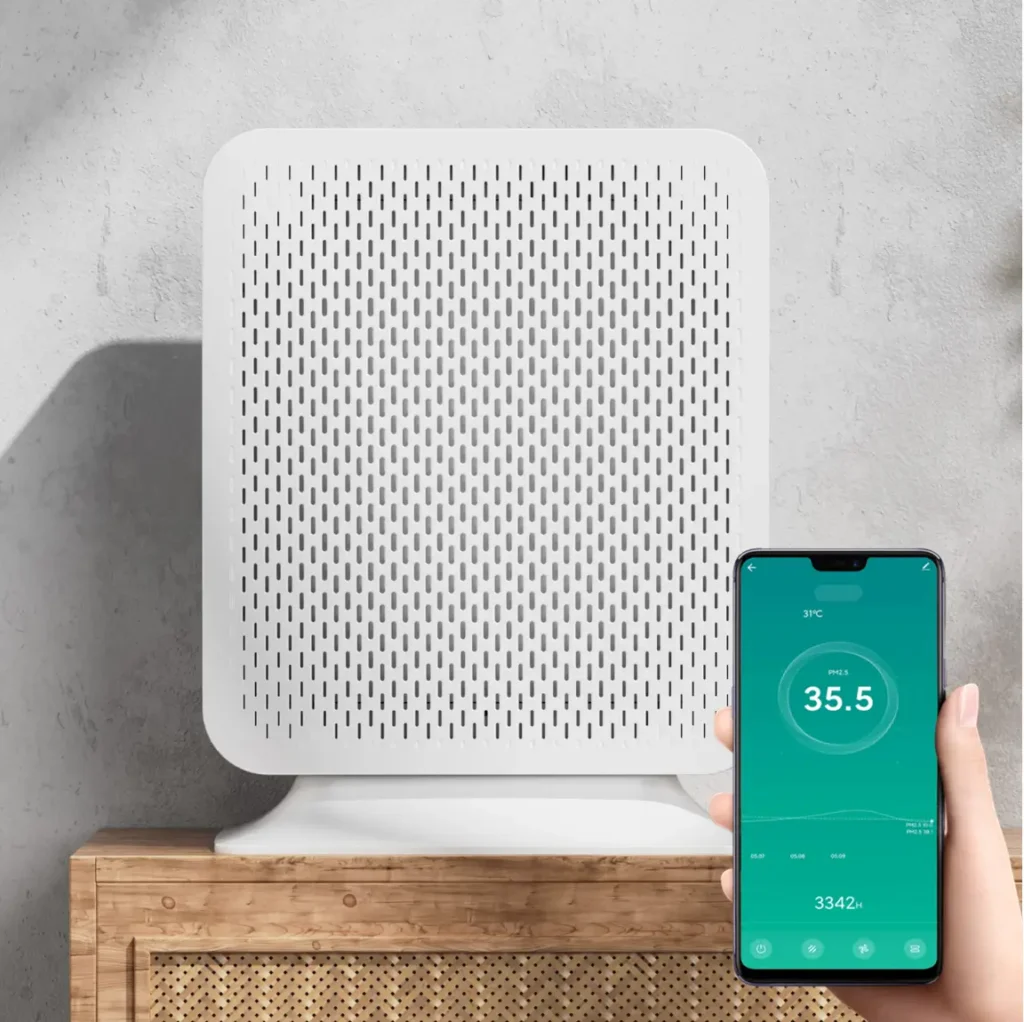As loving pet parents, few things are as distressing as witnessing our beloved feline companions struggle to breathe. Feline asthma, a chronic respiratory condition, can manifest as coughing, wheezing, and difficulty breathing, leaving both cats and their owners feeling helpless. While conventional veterinary treatments are crucial for managing acute asthma attacks and controlling symptoms, many cat owners are increasingly seeking complementary natural approaches to support their cat's respiratory health and improve their overall quality of life. This comprehensive guide will delve into five proven natural methods that can work in conjunction with veterinary care to help your asthmatic cat breathe easier and live a healthier, happier life.
Understanding Feline Asthma
What is Feline Asthma?
Feline asthma, also known as feline bronchial asthma or allergic bronchitis, is a chronic inflammatory disease of the lower airways in cats. It is characterized by inflammation, mucus production, and bronchoconstriction (narrowing of the airways), which can lead to difficulty breathing. This condition is often triggered by allergens or irritants in the environment, causing an exaggerated immune response in susceptible cats. When exposed to these triggers, the cat's immune system overreacts, leading to inflammation and swelling of the bronchial tubes, increased mucus production, and spasms of the smooth muscles surrounding the airways. This combination of factors makes it difficult for air to pass in and out of the lungs, resulting in the characteristic symptoms of asthma.
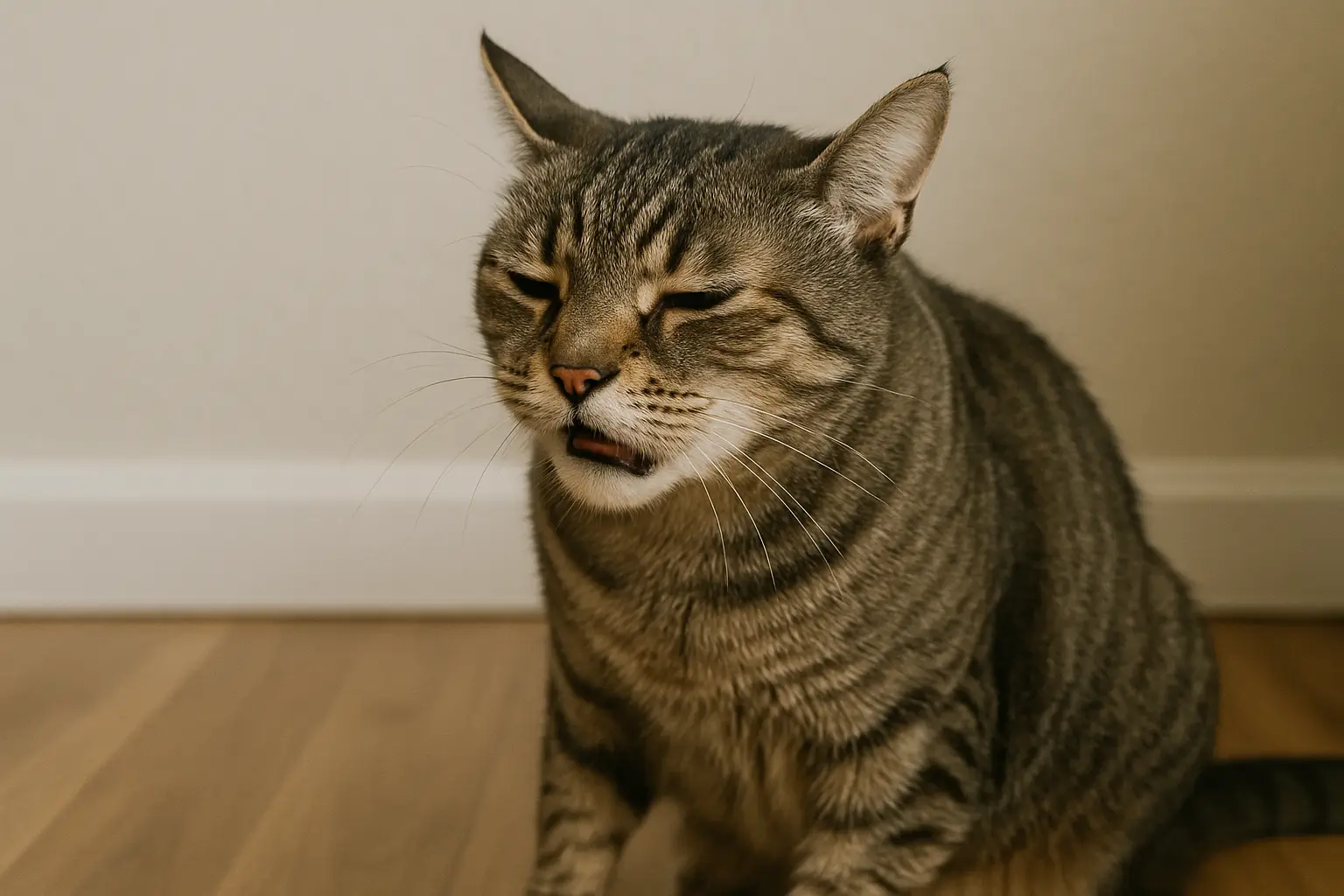
Differences between Allergic Asthma and Feline Lower Airway Disease (FLAD)
While the terms "feline asthma" and "feline lower airway disease (FLAD)" are often used interchangeably, it's important to understand their nuances. Feline asthma is a specific type of FLAD, characterized by an allergic component. FLAD is a broader term that encompasses various conditions affecting the lower airways, including chronic bronchitis, parasitic infections, and even some forms of heart disease that can mimic respiratory issues. However, the vast majority of FLAD cases in cats are indeed allergic asthma, where environmental allergens are the primary culprits. Therefore, while FLAD is a more general diagnosis, feline asthma specifically points to an allergic inflammatory response in the airways. Understanding this distinction helps in targeting the most effective treatment strategies, particularly those focused on allergen avoidance and immune modulation.
Symptoms of Asthma in Cats
Recognizing the signs of feline asthma is crucial for early intervention and effective management. The symptoms can range from mild to severe and may vary in frequency and intensity.
Common Signs of Asthma in Felines
- Coughing: This is often the most common and noticeable symptom. The cough may sound dry and hacking, similar to a hairball cough, but no hairball is produced. It can be persistent or occur in episodes.
- Wheezing: A high-pitched, whistling sound, especially when the cat exhales, indicates narrowed airways. This can sometimes be heard without a stethoscope.
- Difficulty Breathing (Dyspnea): Cats may exhibit rapid, shallow breathing, or abdominal breathing (where the abdomen moves excessively with each breath). Their flanks may heave.
- Open-Mouth Breathing: While normal for dogs after exertion, open-mouth breathing in cats is a significant sign of respiratory distress and warrants immediate veterinary attention.
- Squatting Position: Some cats may adopt a characteristic squatting or hunched position with their neck extended and elbows abducted (outward) in an attempt to ease breathing.
- Lethargy and Reduced Activity: Cats experiencing breathing difficulties may become less active, play less, and show a general decrease in energy.
- Loss of Appetite: In severe cases, the effort of breathing can make eating difficult or unappealing.
Recognizing an Asthma Attack
An acute asthma attack is a medical emergency that requires immediate veterinary care. During an attack, symptoms become much more pronounced and severe:
- Severe Difficulty Breathing: The cat will be visibly struggling to breathe, often with exaggerated abdominal movements.
- Gasping for Air: The cat may gasp or pant, and their gums or tongue might appear bluish (cyanotic) due to lack of oxygen. This is a critical sign.
- Panic and Distress: The cat may appear anxious, restless, or panicky.
- Collapse: In very severe cases, the cat may collapse due to oxygen deprivation.
If you observe any of these severe signs, transport your cat to the nearest veterinary emergency clinic immediately. Early recognition and prompt treatment can be life-saving.
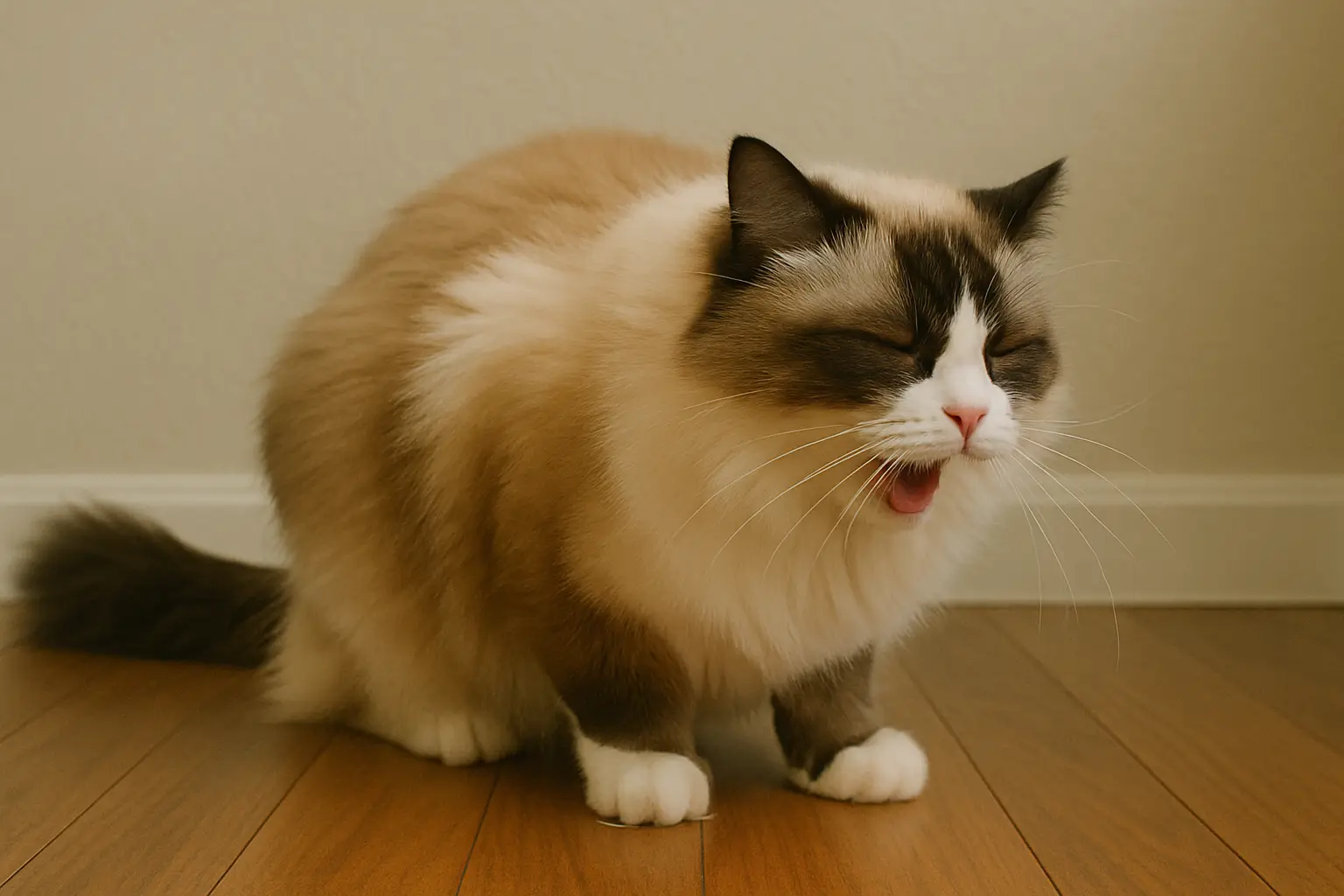
Proven Natural Methods for Treatment
While veterinary medical intervention is paramount for managing feline asthma, integrating natural methods can significantly enhance your cat's well-being and potentially reduce the frequency and severity of asthma episodes. These approaches focus on minimizing triggers, reducing inflammation, and supporting overall respiratory health. Always consult with your veterinarian before implementing any new natural treatments, especially if your cat is already on medication.
1. Dietary Adjustments
Nutrition plays a pivotal role in supporting a healthy immune system and reducing systemic inflammation, both of which are crucial for managing feline asthma. While food allergies are less common triggers for asthma than environmental allergens, optimizing your cat's diet can still contribute to better respiratory health.
Omega-3 Fatty Acids: These essential fatty acids, particularly EPA and DHA found in fish oil, are renowned for their potent anti-inflammatory properties. Supplementing your cat's diet with a high-quality, veterinarian-approved fish oil can help to reduce inflammation in the airways, making breathing easier. It's vital to use a product specifically formulated for pets and to adhere to the dosage recommended by your vet, as excessive amounts can lead to other health issues.
Limited Ingredient Diets (LID) or Novel Protein Diets: If your veterinarian suspects a food sensitivity or allergy might be contributing to your cat's overall inflammatory burden, they might recommend a trial with a limited ingredient diet or a novel protein diet. These diets contain fewer ingredients or protein sources that your cat has not been exposed to before, making it easier to identify and eliminate potential dietary triggers. While the direct link between food and asthma symptoms is not always clear, reducing any source of inflammation in the body can be beneficial.
Antioxidant-Rich Foods: Incorporating foods rich in antioxidants can help combat oxidative stress and inflammation. While most commercial cat foods are fortified, discussing with your vet about specific supplements or small amounts of cat-safe, antioxidant-rich foods might be an option. Always ensure any human food additions are safe and given in moderation.
2. Environment Modifications
Since feline asthma is often triggered by environmental allergens and irritants, creating a clean and allergen-reduced living space is perhaps the most impactful natural method for managing the condition. This involves a multi-pronged approach to minimize exposure to common triggers.
Minimize Dust and Dust Mites: Dust is a significant allergen. Regularly dust surfaces with a damp cloth to trap particles rather than scattering them. Vacuum carpets, rugs, and upholstery frequently, ideally with a vacuum cleaner equipped with a HEPA (High-Efficiency Particulate Air) filter. Consider removing carpets and opting for hard flooring if possible, as carpets can trap allergens. Wash your cat's bedding regularly in hot water.
Eliminate Irritants:
- Smoke: Absolutely no smoking (tobacco, vape, etc.) should occur inside the home. Avoid burning candles, incense, or using fireplaces, as these produce irritating smoke and particulate matter.
- Scented Products: Strong fragrances can irritate sensitive airways. Avoid scented cat litter, air fresheners, plug-ins, perfumes, hairsprays, and heavily fragranced cleaning products. Opt for unscented, dust-free cat litter.
- Chemicals: Use natural, unscented cleaning products and ensure your cat is not present when cleaning is being done. Allow for good ventilation after cleaning.
Control Pollen and Mold: During high pollen seasons, keep windows closed and rely on air conditioning. Ensure your home's HVAC system has a good quality filter and change it regularly. Address any mold or mildew issues promptly, as mold spores are potent allergens.
The Role of Air Purifiers:
An often-underestimated tool in environmental modification is the air purifier. Specifically, units equipped with HEPA filters are highly effective at capturing microscopic airborne particles, including dust, pollen, pet dander, mold spores, and other allergens that can trigger asthma attacks in sensitive cats. By continuously filtering the air, an air purifier can significantly reduce the concentration of these irritants in your home, creating a cleaner and safer breathing environment for your feline companion. Placing these units in areas where your cat spends the most time, such as living rooms or bedrooms, can provide targeted relief. While not a cure, a high-quality air purifier can be a valuable component of an overall strategy to minimize environmental triggers and support your cat's respiratory health, complementing other natural and conventional treatments. The goal is to reduce the overall allergen load, thereby lessening the burden on your cat's sensitive airways and potentially reducing the frequency and severity of asthma flare-ups.
3. Stress Reduction Techniques
Stress can exacerbate many health conditions, and feline asthma is no exception. Cats are creatures of habit and can be highly sensitive to changes in their environment or routine. Stress can trigger or worsen asthma symptoms by affecting the immune system and potentially leading to increased inflammation. Implementing strategies to reduce stress can therefore be a valuable part of a holistic asthma management plan.
Maintain a Consistent Routine: Cats thrive on predictability. Try to keep feeding times, playtime, and sleep schedules consistent. Sudden changes in routine can be a source of anxiety.
Provide a Safe and Enriched Environment: Ensure your cat has plenty of safe spaces where they can retreat and feel secure, such as high perches, cozy beds, or quiet rooms. Environmental enrichment, including scratching posts, interactive toys, and opportunities for mental stimulation, can help reduce boredom and stress. Vertical space, like cat trees, can also provide a sense of security.
Gentle Handling and Positive Reinforcement: Interact with your cat in a calm and gentle manner. Use positive reinforcement during playtime and training to build a strong, trusting bond. Avoid loud noises or sudden movements that might startle them.
Pheromone Diffusers: Products like Feliway diffusers release synthetic feline facial pheromones that can help create a calming and reassuring environment for cats, reducing anxiety and stress-related behaviors. These can be particularly helpful in multi-pet households or during periods of change.
Calming Supplements: In some cases, natural calming supplements containing ingredients like L-theanine or tryptophan may be recommended by your veterinarian to help manage anxiety. Always discuss these options with your vet to ensure they are safe and appropriate for your cat.
Regular, Gentle Play: Engaging in regular, gentle play sessions can help your cat expend energy, reduce stress, and maintain a healthy weight. However, be mindful not to overexert an asthmatic cat, especially during an asthma flare-up.
4. Herbal Supplements
Certain herbs have been traditionally used for their anti-inflammatory, soothing, and respiratory-supportive properties. While promising, it is absolutely crucial to use herbal remedies under the strict guidance of a veterinarian knowledgeable in botanical medicine, as some herbs can be toxic to cats or interact negatively with conventional medications. Never self-prescribe herbal supplements for your cat.
Marshmallow Root (Althaea officinalis): This herb is a demulcent, meaning it contains mucilage that can soothe and coat irritated mucous membranes. For asthmatic cats, marshmallow root can help calm inflamed airways, reduce irritation, and alleviate coughing. It can be particularly helpful for dry, hacking coughs.
Slippery Elm (Ulmus rubra): Similar to marshmallow root, slippery elm is another demulcent that forms a soothing gel when mixed with water. It can help to protect and soothe the lining of the respiratory tract, reducing inflammation and irritation. It is often used to alleviate coughing and discomfort associated with respiratory conditions.
Licorice Root (Glycyrrhiza glabra): Licorice root possesses anti-inflammatory and immune-modulating properties. It can act as an expectorant, helping to loosen and expel mucus from the airways. However, it's important to use deglycyrrhizinated licorice (DGL) to avoid potential side effects associated with glycyrrhizin, such as elevated blood pressure, especially with long-term use. A veterinarian will advise on the appropriate form and dosage.
Mullein (Verbascum thapsus): Mullein has a long history of use as a respiratory tonic. It is known for its expectorant properties, helping to clear congestion and soothe inflamed airways. It can also act as a demulcent, providing a protective layer to irritated mucous membranes.
These herbs are typically available in various forms, such as glycerin-based tinctures or dried powders. Your veterinarian will determine the most appropriate form, dosage, and duration of treatment based on your cat's specific condition and overall health.
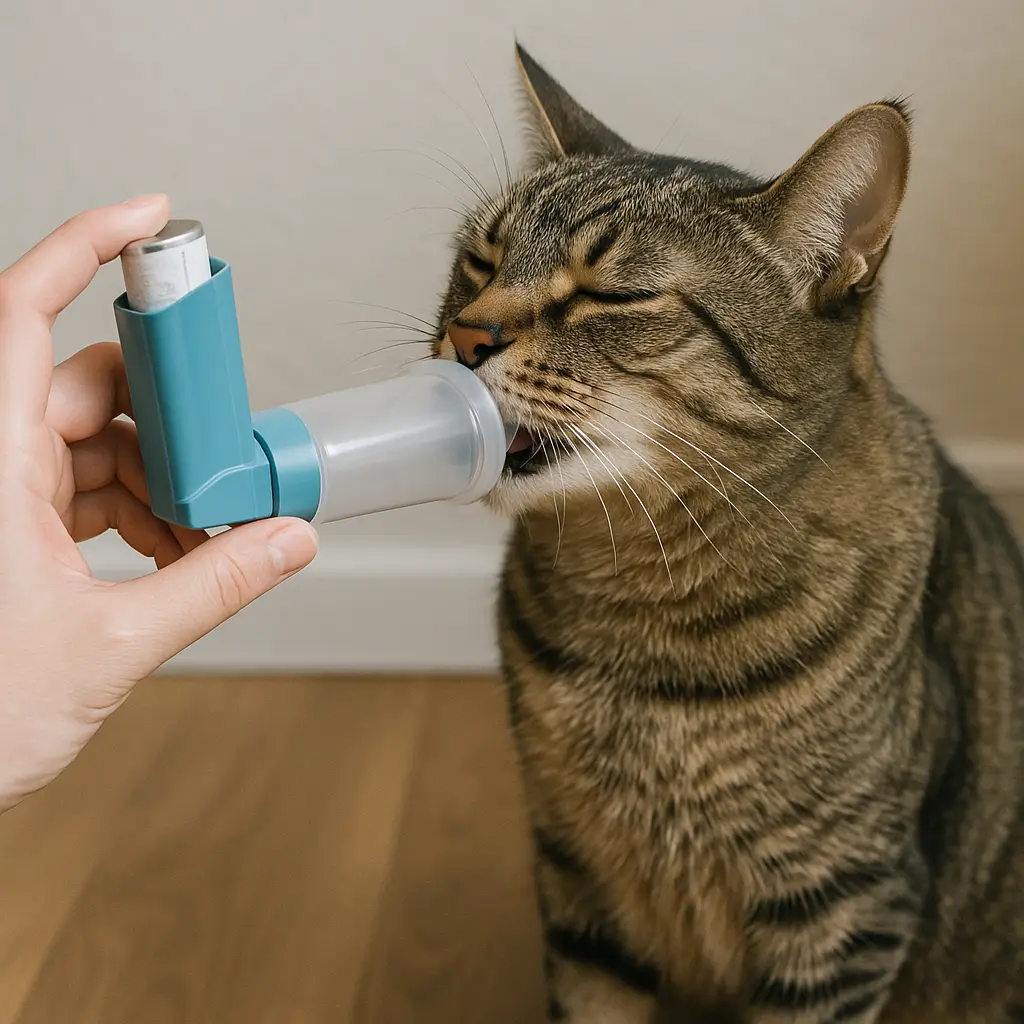
5. Regular Exercise
While it might seem counterintuitive for a cat with a respiratory condition, appropriate and regular exercise can be beneficial for managing feline asthma. Exercise helps maintain a healthy weight, strengthens the cardiovascular system, and can improve overall lung capacity and efficiency. However, it is crucial to approach exercise cautiously and tailor it to your cat's individual capabilities and the severity of their asthma.
Maintain a Healthy Weight: Obesity can significantly worsen asthma symptoms by putting extra pressure on the lungs and diaphragm, making breathing more difficult. Regular, controlled exercise, combined with a balanced diet, can help your cat maintain an ideal body weight, thereby alleviating some of the strain on their respiratory system.
Strengthen Respiratory Muscles: Gentle, consistent activity can help strengthen the muscles involved in breathing, improving their efficiency over time. This doesn't mean intense workouts, but rather encouraging natural feline behaviors like playing, stalking, and climbing.
Appropriate Exercise Levels: The key is moderation and observation. Avoid strenuous activities that might trigger an asthma attack. Instead, focus on short, frequent play sessions with toys that encourage chasing, pouncing, and gentle climbing. Laser pointers, feather wands, and small interactive toys are excellent for this purpose. Observe your cat closely for any signs of respiratory distress, such as increased panting, wheezing, or coughing, and stop the activity immediately if these occur.
Consult Your Veterinarian: Before starting or significantly changing your cat's exercise routine, discuss it with your veterinarian. They can provide guidance on safe exercise levels based on your cat's specific condition and help you identify any limitations. In some cases, especially for cats with severe asthma, exercise might need to be very limited or modified. The goal is to promote overall health and well-being without overtaxing their respiratory system.
The Role of Veterinary Support
While natural methods can play a significant complementary role in managing feline asthma, it is crucial to understand that they are not a substitute for professional veterinary care. Feline asthma is a serious medical condition that requires accurate diagnosis, ongoing monitoring, and often, conventional medical intervention, especially during acute attacks.
Importance of Regular Check-ups
Regular veterinary check-ups are paramount for cats with asthma. Your veterinarian will:
- Confirm Diagnosis: Asthma can mimic other conditions, such as heart disease or parasitic infections. A veterinarian will perform necessary diagnostics (e.g., X-rays, blood tests, bronchoalveolar lavage) to confirm an asthma diagnosis and rule out other underlying issues.
- Monitor Disease Progression: Asthma is a progressive disease. Regular check-ups allow your vet to monitor the severity of your cat's condition, assess the effectiveness of current treatments, and make necessary adjustments.
- Adjust Medications: If your cat is on conventional medications (e.g., corticosteroids, bronchodilators), your vet will carefully manage dosages to achieve optimal control with the fewest side effects. This often involves a delicate balance.
- Provide Guidance on Natural Therapies: Your veterinarian can advise you on which natural therapies are safe and appropriate for your cat, ensuring they do not interact negatively with any prescribed medications or exacerbate existing conditions. They can also help you source high-quality supplements and herbs.
- Address Acute Episodes: In the event of a severe asthma attack, immediate veterinary attention is critical. Your vet can provide life-saving emergency treatment, such as oxygen therapy and injectable bronchodilators.
Combining Natural and Conventional Treatments
The most effective approach to managing feline asthma often involves a synergistic combination of conventional veterinary medicine and natural therapies. This integrated approach aims to:
- Reduce Reliance on High-Dose Medications: By effectively managing environmental triggers and supporting overall health with natural methods, it may be possible to reduce the dosage or frequency of conventional medications, thereby minimizing potential side effects.
- Improve Quality of Life: Natural therapies can help alleviate symptoms, reduce inflammation, and improve your cat's overall comfort and well-being, leading to a better quality of life.
- Address Underlying Causes: While conventional medicine primarily manages symptoms, natural approaches often focus on addressing underlying imbalances and strengthening the body's natural defenses.
- Prevent Flare-ups: A holistic approach, combining both strategies, can be more effective in preventing future asthma flare-ups and maintaining long-term respiratory health.
Always work closely with your veterinarian to develop a comprehensive and individualized treatment plan that integrates both conventional and natural approaches, ensuring the best possible outcome for your asthmatic cat.

Conclusion
Navigating life with a cat diagnosed with asthma, or feline bronchial disease, can be challenging, yet a proactive, integrated approach can profoundly elevate their quality of life. While conventional veterinary medicine offers indispensable tools for managing acute symptoms and controlling the underlying condition, incorporating natural methods provides a potent complementary strategy. By diligently implementing dietary adjustments, meticulously modifying their environment to minimize allergens (including the strategic deployment of advanced air purification systems), employing effective stress reduction techniques, judiciously considering herbal supplements, and ensuring appropriate, regular physical activity, you can construct a comprehensive, holistic management plan that supports your cat's respiratory health from multiple synergistic angles. Remember, the cornerstone of effective feline asthma management is a robust partnership with your trusted veterinarian; always consult them before introducing any new natural therapies to ensure safety, efficacy, and seamless integration with ongoing conventional treatments. By harmonizing the best of modern veterinary science with time-tested natural approaches, you empower your cherished feline companion to breathe with greater ease, engage more fully in play, and ultimately enjoy a healthier, more contented life by your side, a testament to your informed and dedicated care.

